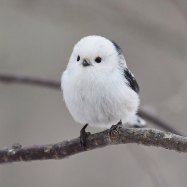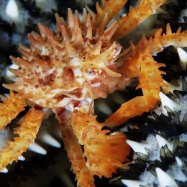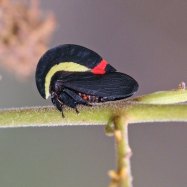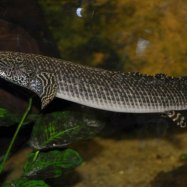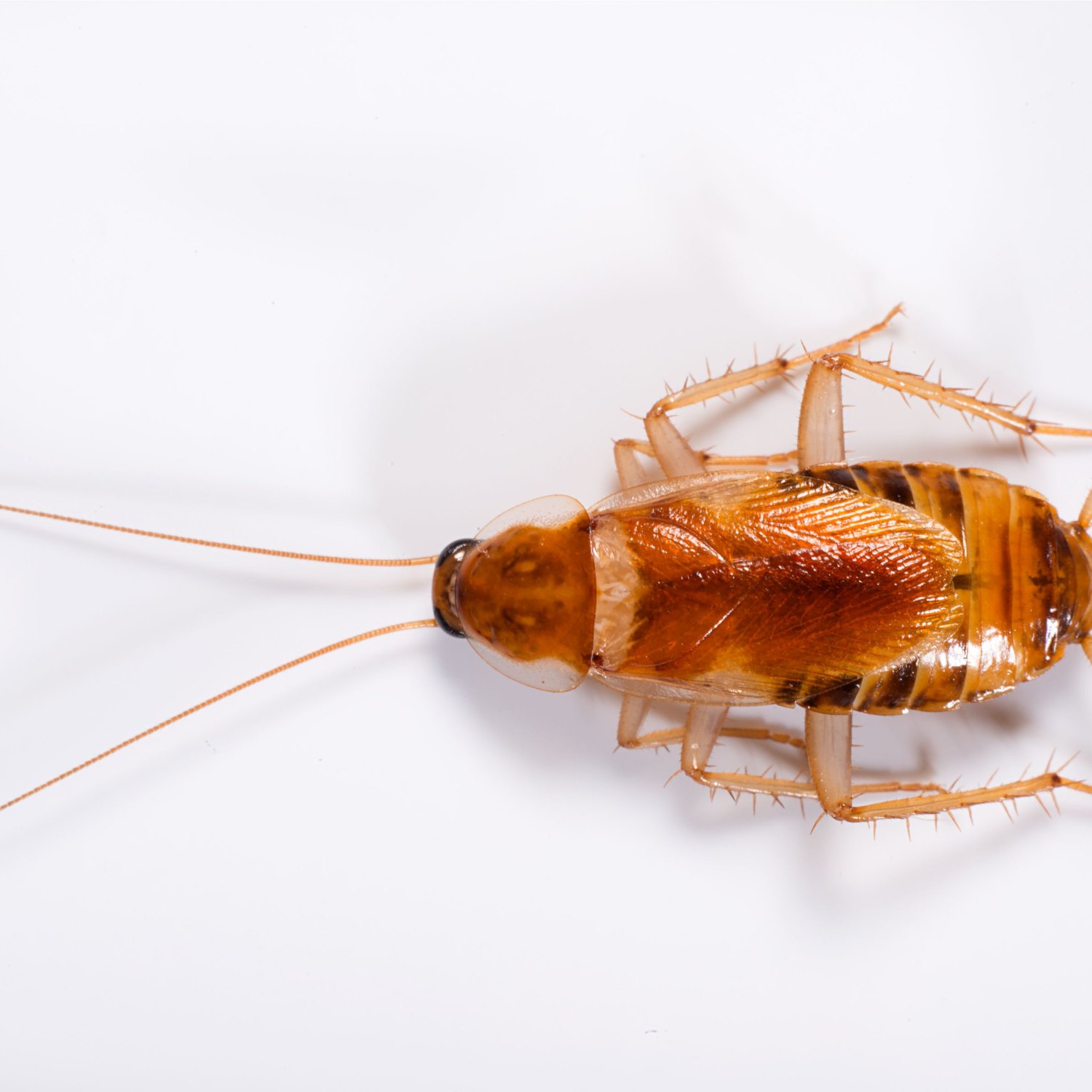
Brown Banded Cockroach
10-14 mm
Meet the Brown Banded Cockroach! Measuring 10-14 mm, this oval and flattened insect belongs to the Ectobiidae family. They can be found in homes, hotels, and other buildings. Keep your eyes peeled for these pesky critters and use precautionary measures to keep them at bay. #BrownBandedCockroach #Ectobiidae #PestControl
Animal Details Summary:
Common Name: Brown Banded Cockroach
Kingdom: Animalia
Habitat: Indoors, warm and dry areas
The Brown Banded Cockroach: A Small but Mighty Insect
When we think of cockroaches, we often imagine large, dirty pests scurrying across our floors and walls. But did you know that not all cockroaches fit this stereotype? In fact, there is a little-known species of cockroach that is much smaller, cleaner, and can easily infest your home without you even realizing it - the Brown Banded Cockroach.Scientifically known as Supella longipalpa, the Brown Banded Cockroach got its name from the distinctive brown bands that can be seen on its wings and abdomen. While these tiny insects may seem harmless, they are actually a common household pest found all around the world, including the United States Brown Banded Cockroach.
In this article, we will dive deeper into the world of the Brown Banded Cockroach, exploring its characteristics, and why it should not be underestimated.
An Introduction to the Brown Banded Cockroach
The Brown Banded Cockroach belongs to the Animal Kingdom, specifically the Phylum Arthropoda, and the Class Insecta. Its scientific name, Supella longipalpa, comes from the Latin words "supella" meaning fine wheat and "longus" meaning long, referencing its long palps (mouthparts).This species of cockroach is a member of the Blattodea order and is part of the Ectobiidae family. They are small in size, measuring only 10-14 mm in length, with a flattened and oval-shaped body. Despite their small size, they have powerful legs that allow them to move quickly and easily.
Habitat and Distribution
Unlike their larger cousins, the Brown Banded Cockroaches prefer to live indoors, specifically in warm and dry areas. You can find them in various structures, including homes, hotels, offices, and other buildings. They prefer to stay in higher places, such as ceilings, shelves, and furniture, but can also be found in lower areas such as closets and cabinets Banana Eel.One interesting fact about the Brown Banded Cockroach is that unlike other cockroach species that are more commonly found in the United States, their country of origin is still unknown. However, they have been found in almost every state in the U.S., making them a widespread and adaptable species.
Feeding and Behavior
The Brown Banded Cockroach is an omnivore, which means they can feed on a variety of food sources. They can eat almost anything, including sweets, fruits, vegetables, meats, and even glue. This makes them potential food scavengers, and they are not picky when it comes to their meals.Just like their larger cockroach relatives, Brown Banded Cockroaches are also known for their resilience and survival abilities. They can withstand long periods without food and can survive up to two weeks without water. They also have a high reproductive rate, with females laying up to 14 egg capsules in their lifetime, each containing around 14-18 eggs.
Despite their small size, Brown Banded Cockroaches can infest a home quickly and without being noticed. They reproduce rapidly and can easily spread throughout a building, making them difficult to control once they have invaded a space.
Physical Characteristics
One of the most distinctive features of the Brown Banded Cockroach is its coloration. They have a dark brown body, with light brown or cream-colored bands across their wings and abdomen. The coloration serves as a camouflage and helps them blend in with their surroundings, making it harder for predators to spot them.Their bodies are also flattened and oval-shaped, allowing them to squeeze through tiny cracks and crevices in search of food and shelter. They also have six legs and two long antennae, which they use to sense their surroundings and locate potential food sources.
The Importance of Natural Language Processing (NLP) in Studying Animals
As we have discussed, the Brown Banded Cockroach is not your average household pest. They are small but mighty insects capable of infesting a space without being immediately noticeable. Studying their characteristics, behavior, and distribution can provide valuable insights into their survival abilities and how to control their populations.But with so many resources and information available, it can be overwhelming to sift through them all. This is where Natural Language Processing (NLP) comes in. NLP is a field of artificial intelligence that focuses on analyzing, understanding, and generating human language data.
By using NLP algorithms, researchers and scientists can analyze large sets of data quickly and accurately, providing insights into the behavior, distribution, and characteristics of different animal species, including the Brown Banded Cockroach.
Some of the key benefits of NLP in studying animals include:
- Efficient data processing and analysis
- Higher accuracy and consistency in data interpretation
- Identification of patterns and trends in animal behavior
- Improved understanding of animal communication and vocalizations
- Assistance in developing conservation strategies
NLP, along with other AI technologies, has significantly advanced the field of animal behavior and ecology, allowing researchers to gain a better understanding of the animal world.
The Role of NLP in Identifying and Controlling Brown Banded Cockroach Infestations
NLP has also played a vital role in identifying and controlling Brown Banded Cockroach infestations. By analyzing data collected from various sources, researchers can identify the most common characteristics, habits, and behaviors of this pest, making it easier to develop effective control methods.One of the ways NLP has been used in controlling Brown Banded Cockroach populations is through pheromone traps. These traps use synthetic hormones produced by female Brown Banded Cockroaches to lure males, preventing them from reproducing and controlling their numbers. NLP has greatly assisted in the development and refinement of these traps, making them more efficient and effective in controlling populations.
How to Identify and Prevent Brown Banded Cockroach Infestations
While Brown Banded Cockroaches may seem like harmless, tiny pests, they can quickly become a nuisance when they infest a home or building. Here are some tips to help you identify and prevent infestations:- Inspect and seal any cracks or crevices in walls, floors, and windows.
- Install door sweeps on exterior doors to prevent cockroaches from entering.
- Keep your home clean, especially in areas where food is stored and prepared. Regularly clean and declutter these areas, and do not leave food out overnight.
- Dispose of garbage regularly and ensure trash cans are tightly sealed.
- Fix any plumbing leaks to eliminate sources of water.
- Check luggage and packages for any signs of cockroach infestations when traveling.
In Conclusion
The Brown Banded Cockroach is not your typical household pest. They are small but powerful, with the ability to infest a home or building without being immediately noticed. With their resilience, adaptability, and quick reproduction rate, controlling their populations can be a challenge.However, with the help of NLP and other AI technologies, researchers and pest control experts can gain a better understanding of this species and develop effective methods for managing and preventing infestations. By being aware of their existence, understanding their behavior, and taking steps to prevent infestations, we can keep these tiny but mighty insects out of our homes.

Brown Banded Cockroach
Animal Details Brown Banded Cockroach - Scientific Name: Supella longipalpa
- Category: Animals B
- Scientific Name: Supella longipalpa
- Common Name: Brown Banded Cockroach
- Kingdom: Animalia
- Phylum: Arthropoda
- Class: Insecta
- Order: Blattodea
- Family: Ectobiidae
- Habitat: Indoors, warm and dry areas
- Feeding Method: Omnivorous
- Geographical Distribution: Worldwide
- Country of Origin: Unknown
- Location: Found in homes, hotels, and other buildings
- Animal Coloration: Dark brown with light bands across the wings and abdomen
- Body Shape: Oval and flattened
- Length: 10-14 mm
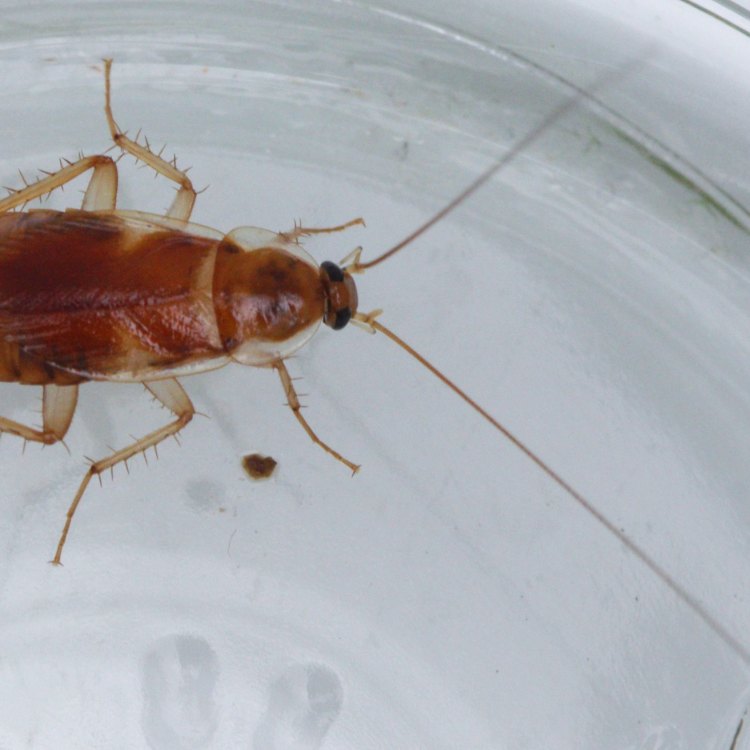
Brown Banded Cockroach
- Adult Size: Small
- Average Lifespan: Up to 6-12 months
- Reproduction: Egg-laying
- Reproductive Behavior: Females carry the eggs in a capsule called an ootheca until they are ready to hatch
- Sound or Call: None
- Migration Pattern: No regular migration pattern
- Social Groups: Solitary
- Behavior: Nocturnal, fast runners, hide during the day
- Threats: Pesticides, predators
- Conservation Status: Not evaluated
- Impact on Ecosystem: Indoor pest, can contaminate food
- Human Use: None
- Distinctive Features: Light-colored bands across the abdomen and wings
- Interesting Facts: Male has full wings, female has short wings, can survive without food for up to a month
- Predator: Birds, reptiles, and other insects
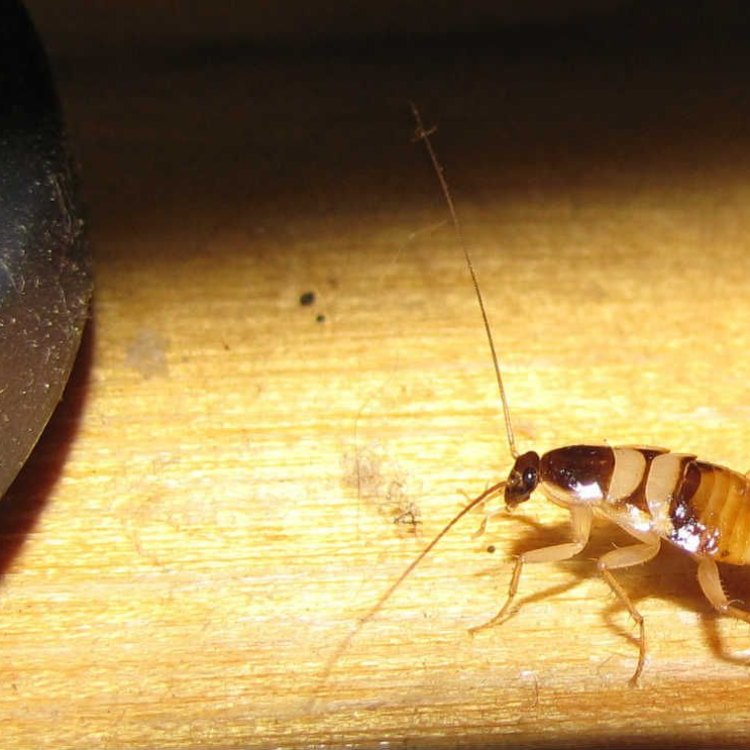
Supella longipalpa
The Survival of the Fittest: The Unique World of the Brown Banded Cockroach
Cockroaches are a common sight in many homes and are often considered a nuisance. However, not all cockroaches are created equal. Among the numerous species of cockroaches, the Brown Banded Cockroach stands out with its distinctive features and interesting behaviors.The Brown Banded Cockroach (Supella longipalpa) belongs to the order Blattodea, which includes over 4,000 species of cockroaches PeaceOfAnimals.Com. It is native to Asia but has spread worldwide due to human travel and trade. These small insects have adapted well to urban environments and are commonly found in homes, offices, and other indoor spaces.
Adult Brown Banded Cockroaches have an average size of 12-15 mm, making them one of the smallest species of cockroaches. Despite their small size, they can live for up to 6-12 months, making them a significant survivalist in their ecosystem. But what sets this species apart from others? Let us dive deeper and discover the unique features and behaviors of the Brown Banded Cockroach.
Reproductive Behavior: Females Carry and Protect Their Eggs
One of the most distinct characteristics of the Brown Banded Cockroach is its reproductive behavior. Unlike some cockroach species, females carry their eggs in a capsule called an ootheca, which is located at the end of their abdomen. The ootheca is a protective case that holds up to 18 eggs at a time. The female carries this ootheca until the eggs are ready to hatch, which usually takes about two weeks Barb.This reproductive behavior has significant advantages for the survival of this species. The ootheca provides a safe and protected environment for the eggs to develop, reducing the risk of predation. Additionally, the female's responsibility for protecting the eggs ensures the survival of the next generation, increasing the species' chances of survival.
Distinctive Features: Light-Colored Bands Across the Abdomen and Wings
The Brown Banded Cockroach is easily distinguishable from other species due to its distinctive features. As the name suggests, this species has light-colored bands across its abdomen and wings, giving it a 'banded' appearance. The bands are usually yellowish-brown or tan, but they can also be darker in some individuals.Interestingly, the male and female of this species have distinct wing lengths. The male has full wings that extend past the tip of its abdomen, while the female has short wings that do not cover its entire abdomen. This feature is unique among cockroach species and is a useful way to differentiate between the sexes.
Nocturnal Behavior: Fast Runners and Hide During the Day
Brown Banded Cockroaches are nocturnal, meaning they are active at night. This behavior is due to their need to avoid predators and conserve energy during the day. These insects are fast runners and can achieve speeds of up to 3 km/h. This remarkable speed, combined with their small size, makes them difficult to catch, making them excellent survivors in their ecosystem.Furthermore, these cockroaches are excellent at hiding. They prefer dark and warm areas and tend to hide in cracks, crevices, and small spaces during the day. This behavior not only helps them avoid predators but also aids in their survival by providing protection from extreme environmental conditions, such as heat or cold.
An Indoor Pest: The Impact of Brown Banded Cockroaches on Ecosystems
While cockroaches play an essential role in their ecosystems by aiding in the decomposition of organic matter, the Brown Banded Cockroach is considered an indoor pest. It is often found in homes, where it feeds on a variety of items, including glue, wallpaper paste, and book bindings.The Brown Banded Cockroach can also contaminate food items, posing a health risk to humans. They produce an unpleasant odor when in large numbers, and their droppings can irritate people with respiratory problems, such as asthma.
Solitary Social Group: Surviving on Their Own
Unlike some other cockroach species, the Brown Banded Cockroach is solitary. They do not form social groups and primarily live and survive on their own. This behavior is another factor in their success in urban environments, where resources are scarce, and competition for survival is high.Predators of the Brown Banded Cockroach
Like all organisms, the Brown Banded Cockroach has predators that pose a threat to their survival. These predators include birds, reptiles, and other insects. In urban environments, the most common predators are lizards, spiders, and other insects such as ants and wasps.Interesting Facts: Surviving Without Food for Up to a Month
The Brown Banded Cockroach is a true survivor, capable of enduring harsh conditions and going without food for extended periods. These insects can survive without food for up to a month, making them resilient and adaptable to changing environments. This ability is due to their slow metabolism, allowing them to conserve energy and survive longer without food.Moreover, Brown Banded Cockroaches can also survive without water for up to two weeks. This is a unique feature that sets them apart from other cockroach species, making them experts in surviving in dry and arid environments.
No Regular Migration Pattern: Surviving by Staying Put
Unlike some other insect species, Brown Banded Cockroaches do not have a regular migration pattern. They tend to stay in one place, moving only if resources become scarce or environmental conditions become unfavorable. This behavior helps them survive by reducing their exposure to predators and potential dangers during migration.Threats and Conservation Status
Despite being classified as an indoor pest, Brown Banded Cockroaches do face threats to their survival. Pesticides are commonly used to control their populations, which can have severe effects on their health and reproductive abilities. Additionally, predators, habitat destruction, and environmental changes also pose threats to this species.As of now, the Brown Banded Cockroach is not evaluated for its conservation status. This species is widespread and adaptable, making it less vulnerable to extinction. However, it is essential to consider the impact of human actions and the use of pesticides on the survival of this and other insect species.
The Brown Banded Cockroach: A Fascinating Survivor
In conclusion, the Brown Banded Cockroach is a unique and fascinating insect species well adapted to urban environments. Its reproductive behavior, distinctive features, survival skills, and adaptive behaviors make it a successful survivor in its ecosystem. However, it is essential to understand and manage the impact of our actions on the survival of this and other species to maintain a healthy and balanced ecosystem. After all, as the saying goes, "survival of the fittest" also means being responsible for the survival of all species in our shared world. So let us appreciate the unique world of the Brown Banded Cockroach and strive to coexist with all living beings on our planet.
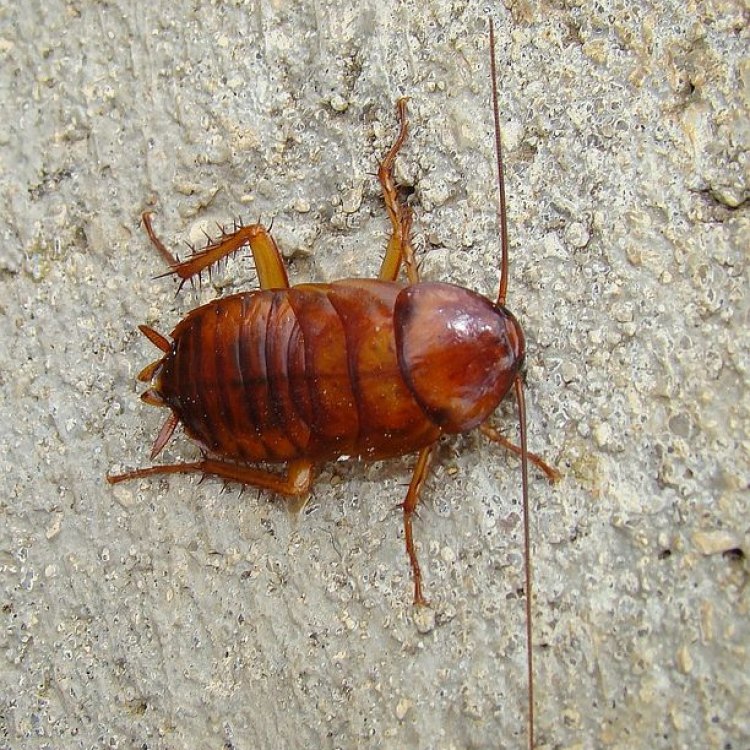
The Brown Banded Cockroach: A Small but Mighty Insect
Disclaimer: The content provided is for informational purposes only. We cannot guarantee the accuracy of the information on this page 100%. All information provided here may change without prior notice.





